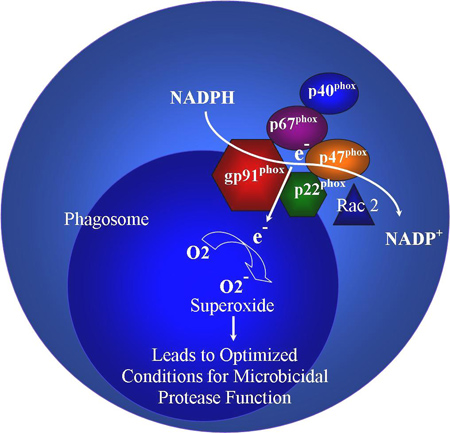Resumo
Definição
History and exam
Key diagnostic factors
- history of prior infections
- shortness of breath
- perianal pain
- flank pain
- red skin lesion
- abnormal chest examination
- rigors
- fever
- chronic lymphadenopathy
- poor growth
- joint pain
- facial pain
- chorioretinal lesions
- skin scarring
Other diagnostic factors
- fatigue
- diarrhea
- abdominal pain
- cough
- anorexia
- arthralgias
- nausea and vomiting
- bloody urine
- abnormal urinary flow
- hepatosplenomegaly
- family history of discoid lupus
- oral ulcer
- skin rash
Risk factors
- family history of CGD
- age <5 years
- male sex
- abnormally skewed X chromosome inactivation in X-linked carriers
- myeloperoxidase and FCgammaRIIIb polymorphisms
Diagnostic tests
1st tests to order
- CBC
- ESR
- CRP
- fecal calprotectin
- CT chest
- CT or ultrasound for active infection
- whole body PET scan with F-18 fluorodeoxyglucose (FDG)
- MRI scan
- colonoscopy
- pulmonary function tests
- nitroblue tetrazolium (NBT) test
- dihydrorhodamine (DHR) 123 test
Tests to consider
- genetic sequencing for genes encoding NADPH oxidase components
- Western blotting
- flow cytometric analysis of individual NADPH oxidase components
Treatment algorithm
active non-life-threatening infection: on first presentation
active life-threatening infection: on first presentation
following initial empiric treatment
following resolution of acute episode
Contributors
Authors
David Lowe, MA, MB Bchir, PhD, FRCP
Consultant Clinical Immunologist
The Royal Free Hospital
London
UK
Disclosures
DL has received personal fees from Gilead for an educational video and from Merck for a roundtable discussion. He has received speaker fees from Biotest, Takeda, and Astra-Zeneca and support to attend a conference from Octapharma. DL also holds research grants from NIHR, MRC, LifeArc, GSK, and Bristol Myers Squibb and has received consultancy fees from GSK paid to his institution.
Acknowledgements
Dr David Lowe would like to gratefully acknowledge Dr Adrian Thrasher, Dr Rebecca A. Marsh, and Dr Jack J. Bleesing, previous contributors to this topic. AT is an author of a number of references cited in this topic. RAM and JJB declare that they have no competing interests. Dr Rebecca A. Marsh and Dr Jack J. Bleesing wish to thank Dan Marmer, Carrie Koenig, and the Cincinnati Children's Hospital Clinical Diagnostic Immunology Lab. They also wish to thank Steven M. Holland, MD, Thomas Fleisher, MD, and Anthony Segal, MD, PhD, for helpful correspondence.
Peer reviewers
Niraj C. Patel, MD, MS
Associate Professor of Pediatrics
Duke University
Durham
NC
Disclosures
NCP is on the Speakers Bureau for Amgen.
Andrew Gennery, MD
Reader in Paediatric Immunology & HSCT
Institute of Cellular Medicine
Medical School
Newcastle University
Newcastle-upon-Tyne
UK
Disclosures
AG is an author of a reference cited in this topic. AG declares that he has no competing interests.
Peer reviewer acknowledgements
BMJ Best Practice topics are updated on a rolling basis in line with developments in evidence and guidance. The peer reviewers listed here have reviewed the content at least once during the history of the topic.
Disclosures
Peer reviewer affiliations and disclosures pertain to the time of the review.
References
Key articles
Thomsen IP, Smith MA, Holland SM, et al. A comprehensive approach to the management of children and adults with chronic granulomatous disease. J Allergy Clin Immunol Pract. 2016 Nov-Dec;4(6):1082-8. Abstract
Bonilla FA, Khan DA, Ballas ZK, et al. Practice parameter for the diagnosis and management of primary immunodeficiency. J Allergy Clin Immunol. 2015 Nov;136(5):1186-205.e1-78.Full text Abstract
Reference articles
A full list of sources referenced in this topic is available to users with access to all of BMJ Best Practice.

Differentials
- leukocyte adhesion deficiency type I
- glucose-6-phosphate dehydrogenase deficiency
- myeloperoxidase deficiency
More DifferentialsGuidelines
- Practice parameter for the diagnosis and management of primary immunodeficiency
More GuidelinesLog in or subscribe to access all of BMJ Best Practice
Use of this content is subject to our disclaimer